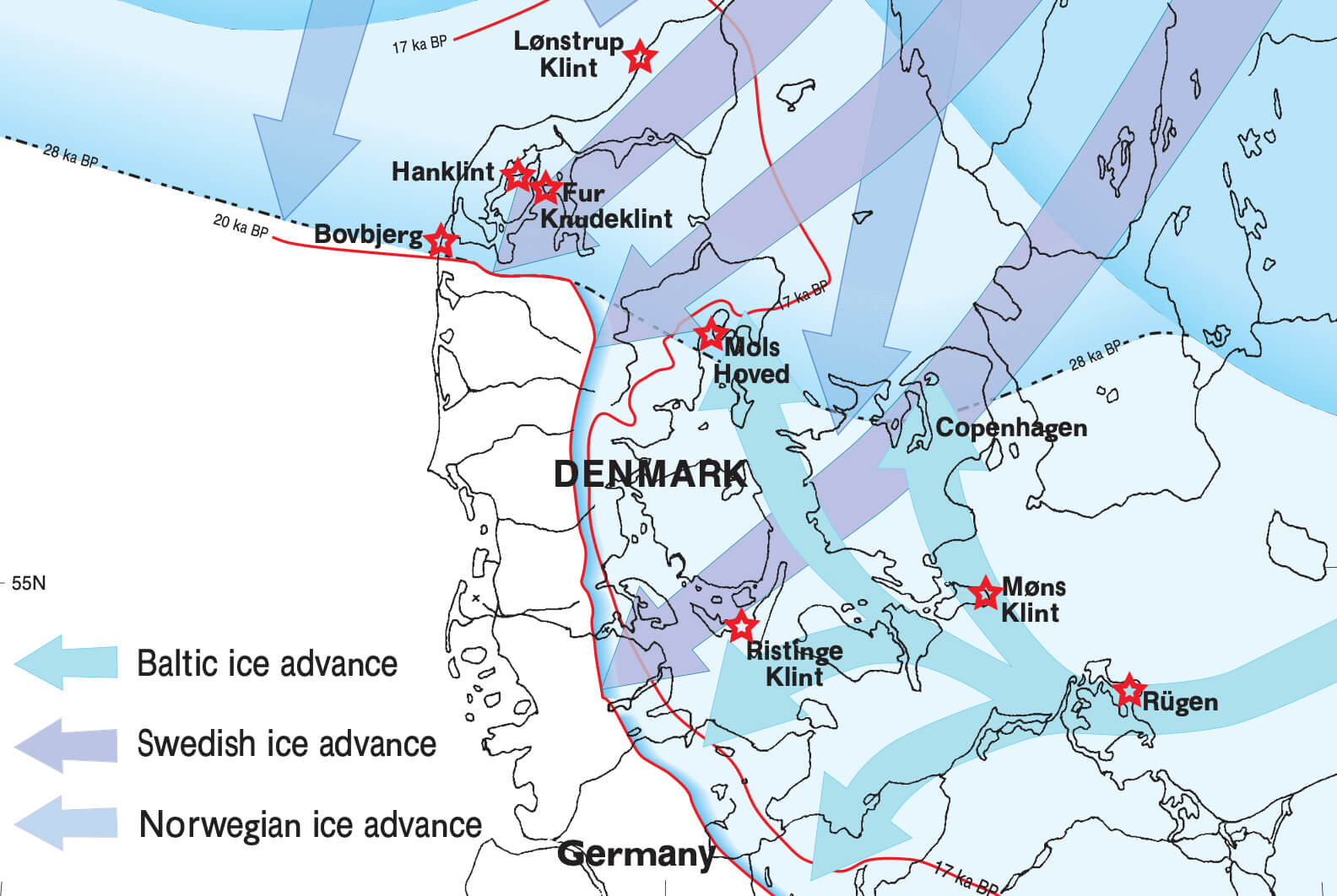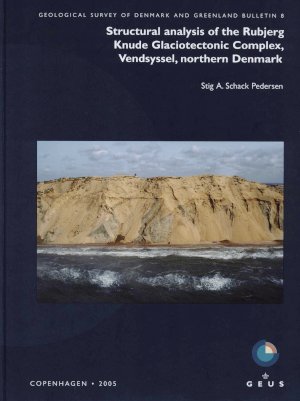
How to Cite
Share
Abstract
Pedersen, S.A.S. 2005: Structural analysis of the Rubjerg Knude Glaciotectonic Complex, Vendsyssel, northern Denmark. Geological Survey of Denmark and Greenland Bulletin 8, 192 pp.
The Rubjerg Knude Glaciotectonic Complex is a thin-skinned thrust-fault complex that was formed during the advance of the Scandinavian Ice Sheet (30 000 – 26 000 B.P.); it is well exposed in a 6 km long coastal profile bordering the North Sea in northern Denmark. The glaciotectonic thrust-fault deformation revealed by this cliff section has been subjected to detailed structural analysis based on photogrammetric measurement and construction of a balanced cross-section. Thirteen sections are differentiated, characterising the distal to proximal structural development of the complex. The deformation affected three stratigraphic units: the Middle Weichselian arctic marine Stortorn Formation, the mainly glaciolacustrine Lønstrup Klint Formation and the dominantly fluvial Rubjerg Knude Formation; these three formations are formally defined herein, together with the Skærumhede Group which includes the Stortorn and Lønstrup Klint Formations. The Rubjerg Knude Formation was deposited on a regional unconformity that caps the Lønstrup Klint Formation and separates pre-tectonic deposits below from syntectonic deposits above.
In the distal part of the complex, the thrust-fault architecture is characterised by thin flatlying thrust sheets displaced over the footwall flat of the foreland for a distance of more than 500 m. Towards the proximal part of the complex, the dip of the thrust faults increases, and over long stretches they are over-steepened to an upright position. The lowest décollement zone is about 40 m below sea level in the proximal part of the system, and shows a systematic step-wise change to higher levels in a distal (southwards) direction. The structural elements are ramps and flats related to hanging-wall and footwall positions. Above upper ramp-hinges, hanging-wall anticlines developed; footwall synclines are typically related to growth-fault sedimentation in syntectonic piggyback basins, represented by the Rubjerg Knude Formation. Blocks and slump-sheets constituting parts of the Lønstrup Klint Formation were derived from the tips of up-thrusted thrust sheets and slumped into the basins. Mud diapirs are a prominent element in the thrust-fault complex, resulting from mud mobilisation mainly at hanging-wall flats and ramps.
Shortening during thrust-fault deformation has been calculated as 50%. Only about 11% of the initial stratigraphic units subjected to thrust faulting has been lost due to erosion. The thrust-fault deformation was caused by gravity spreading of an advancing ice sheet. Overpressured mud-fluid played an important role in stress transmission. The average velocity of thrust-fault displacement is estimated at 2 m per year, which led to compression of a 12 km stretch of flat-lying sediments, c. 40 m in thickness, into a thrust-fault complex 6 km in length. The thrust-fault complex is truncated by a glaciotectonic unconformity, formed when the advancing ice sheet finally overrode the complex. When this ice sheet melted away, a hilland- hole pair was formed, and meltwater deposits derived from a new ice-advance (NE-Ice) filled the depression. The NE-Ice overran the complex during its advance to the main stationary line situated in the North Sea. When this ice in turn melted away (c. 19 000 – 15 000 B.P.), the glacial landscape was draped by arctic marine deposits of the Vendsyssel Formation (new formation defined herein).
How to Cite
Share
Supplementary Files
Downloads
Stig A. Schack Pedersen
The coastal cliff (99 m high at its highest point) at Rubjerg Knude on the west coast of Vendsyssel, northern Denmark. The lower two-thirds of the cliff, beneath the prominent dark sub-horizontal surface, forms part of the cross-section through the Rubjerg Knude Glaciotectonic Complex displaying imbricated thrust [...]










